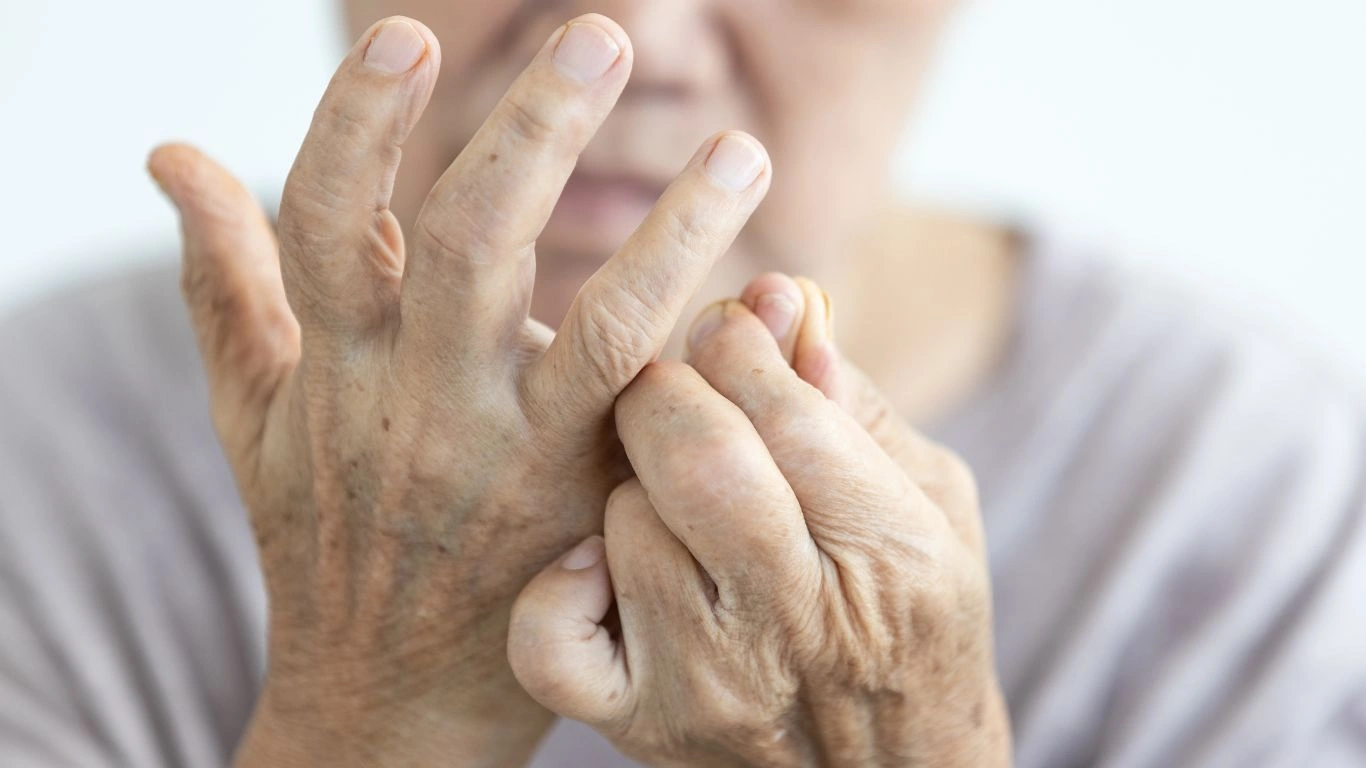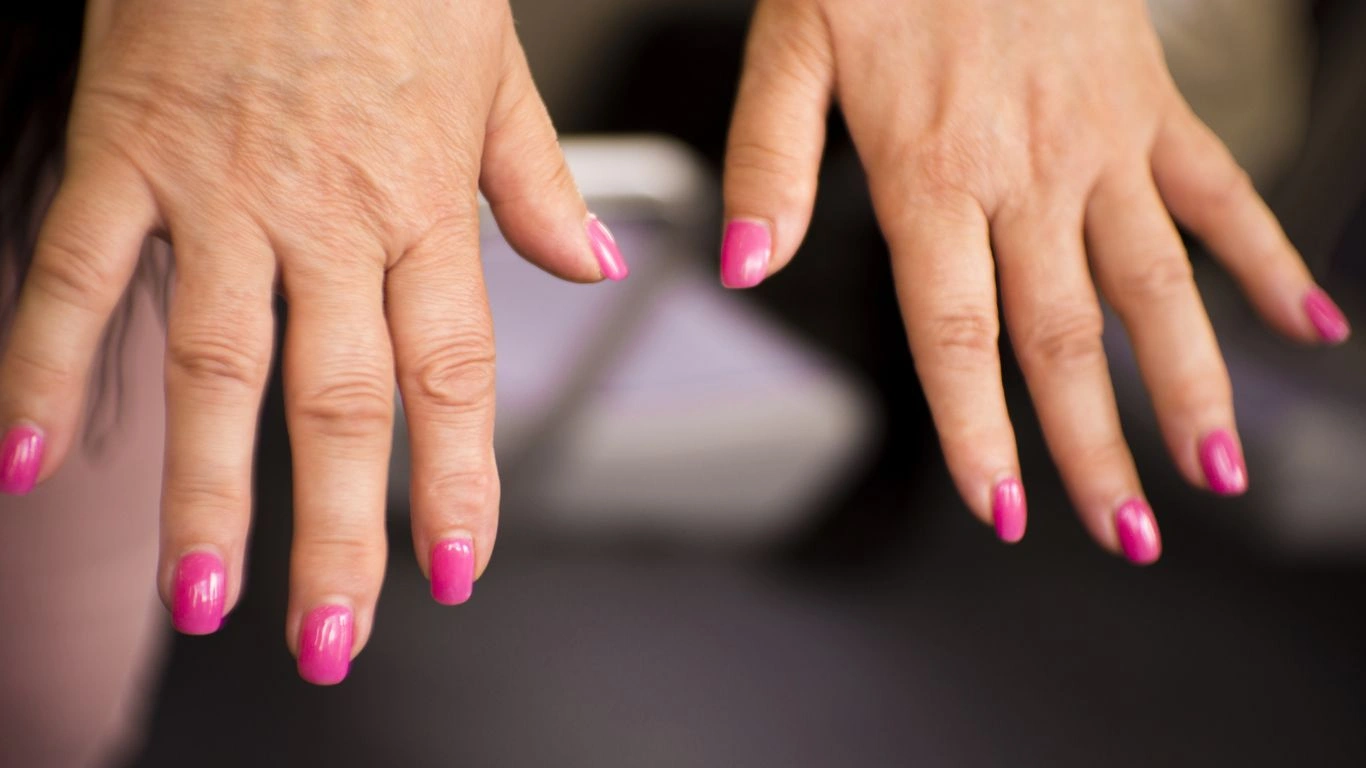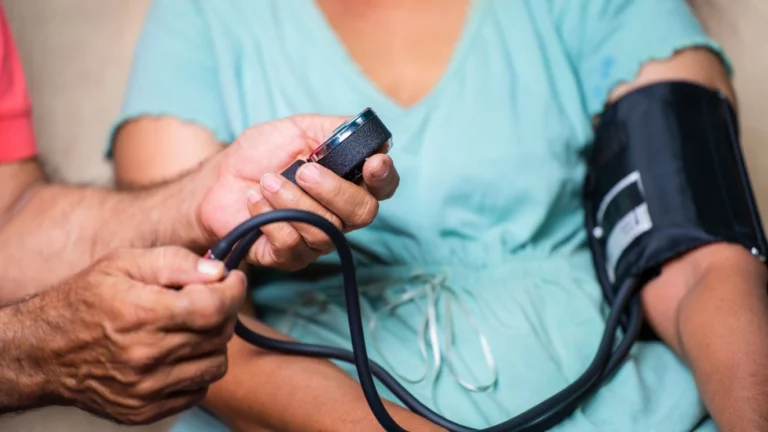Break Free from Stress: Rheumatoid Arthritis Relief Techniques That Work
If you’ve ever wondered how rheumatoid arthritis and stress management techniques are connected, you’re not alone. As a Rheumatology Nurse Practitioner, I’ve seen first-hand how stress can sneak in like an uninvited guest and stir up all kinds of trouble in people already battling chronic conditions like RA. It’s something that rarely gets the spotlight it deserves, but understanding this link can be a total game-changer in managing symptoms more holistically. This isn’t just theory from textbooks — it’s what I’ve learned at the bedside, in patient rooms, and honestly, even in my own moments of stress.
How Stress Fuels the Fire of Rheumatoid Arthritis

Stress isn’t just “in your head.” It actually has a very real and measurable effect on the body, especially if you’re living with RA. What I’ve noticed over and over again is that my patients often report flare-ups right after big life changes — job stress, family drama, financial worries. Sound familiar? That’s not just coincidence.
When you’re under stress, your body amps up production of cortisol and other stress hormones. In small doses, this response can be helpful — it’s our fight-or-flight mode. But when stress lingers, it becomes chronic, and that’s where the real trouble starts. Your immune system becomes dysregulated, and for folks with autoimmune diseases like RA, this means more inflammation, more pain, and often more medications.
The Inflammation Loop
It’s kind of like a vicious cycle — RA causes stress, stress fuels inflammation, and inflammation makes RA worse. I’ve had patients come in wondering why they feel worse even though their labs look okay. After a few gentle questions, it’s often clear: they’ve been overwhelmed, sleep-deprived, or emotionally drained. The immune system reacts to that stress by throwing a fit — literally. And RA doesn’t like being provoked.
The Importance of Recognizing Emotional Triggers

One of the things I always encourage patients to do is take stock of their emotional landscape. Stress doesn’t always look like panic attacks and crying spells. Sometimes it’s subtle: being snappy with your partner, feeling “off,” or skipping your daily walk because you’re too mentally drained. These are red flags.
From a clinical standpoint, unmanaged emotional triggers can be just as disruptive as a missed dose of methotrexate. I’ve seen people make incredible strides just by learning how to pause, take a breath, and respond instead of react. It’s not about eliminating stress — that’s impossible — but rather managing your response to it in ways that don’t feed the disease.
Common Stress Triggers in RA Patients
- Unpredictable pain and fatigue
- Financial stress due to healthcare costs
- Feeling isolated or misunderstood
- Fear of disease progression
- Guilt about needing help or not keeping up with others
Each of these can stir up anxiety, and unless we acknowledge them, they quietly build up in the background — like clutter in a closet you keep promising to clean out. Before you know it, you’re carrying a weight that your joints, quite literally, can’t bear.
Everyday Stress Management Techniques That Actually Help

Now let’s get into what actually works. This isn’t just textbook advice — these are techniques that have helped my patients (and me, too) stay sane and functional in the face of a stubborn autoimmune disease. Remember, what works for one person might not work for another, and that’s okay. The goal is progress, not perfection.
1. Deep Breathing & Grounding Exercises
It sounds too simple, right? But taking a few deep, intentional breaths can lower your cortisol levels and relax tense muscles. One method I love is the “4-7-8” technique — inhale for 4 seconds, hold for 7, exhale for 8. Try it before bed or even at your desk. It’s like a mini reset button for your nervous system.
2. Journaling with Purpose
I often suggest journaling not just to vent, but to notice patterns. Do flares follow certain emotional events? Are there times of the day or month when things feel harder? One patient started tracking her emotional state along with her joint pain, and discovered that arguments with her teenage daughter consistently preceded a flare. That awareness alone helped her start setting healthier boundaries and expectations at home.
3. Gentle Movement — Not Just Exercise
We often tell patients to “stay active,” but honestly, that phrase can feel overwhelming when you’re in pain. Instead, think of movement as medicine. Stretching, yoga, short walks, or even dancing around the kitchen count. The key is consistency and listening to your body — some days, five minutes is enough.
4. Mindfulness and Meditation
This isn’t just a wellness buzzword — mindfulness has serious science backing it up. Regular practice can reduce inflammation markers and improve mood. I recommend starting with just 2–3 minutes a day. Apps like Insight Timer or Headspace make it easy, and hey, you don’t need to sit cross-legged or chant unless you want to.
5. Community & Connection
Don’t underestimate the power of simply being heard. Whether it’s a support group, therapy, or texting a friend who “gets it,” connection eases the emotional burden. I’ve seen patients bloom just by joining an online RA group where they could finally say, “I’m tired,” and have others nod in understanding instead of giving unsolicited advice.
Nutrition, Stress, and RA: Feeding Your Body and Mind

Let’s talk food — because what you eat absolutely plays a role in both rheumatoid arthritis and stress management techniques. I’ve had patients totally overlook this part, not realizing their breakfast or late-night snacks might be contributing to how crummy they feel. And no, I’m not here to toss out a bunch of unrealistic food rules. This is about small, doable changes that make a big difference.
When you’re already juggling joint pain, fatigue, and the emotional ups and downs of chronic illness, food can either soothe or stir the storm. I’ve seen patients who clean up their diet just a little — fewer processed snacks, more colorful veggies, and healthy fats — and suddenly they’re sleeping better, moving better, and not feeling quite so emotionally frayed.
Anti-Inflammatory Food Swaps
- Swap refined carbs (white bread, pastries) for whole grains like quinoa or brown rice
- Trade soda or sweet teas for infused water or herbal teas
- Replace processed meats with omega-3 rich fish like salmon or mackerel
- Snack on nuts (walnuts, almonds) instead of chips or cookies
- Use anti-inflammatory herbs like turmeric and ginger generously
I like to remind people that what you eat shouldn’t feel like punishment. Start with one meal a day. One of my favorite easy anti-inflammatory lunches? A bowl with mixed greens, roasted sweet potatoes, chickpeas, and tahini dressing. Takes 10 minutes and leaves me feeling recharged — not sluggish.
Sleep Hygiene: The Overlooked Stress Buster

Another piece of the puzzle that often flies under the radar? Sleep. You might not connect those restless nights with your flares, but I promise there’s a connection. I’ve had patients tell me they feel like their RA is worse after a bad night’s sleep — and guess what? They’re right.
RA and stress both disrupt sleep, and lack of sleep makes both worse. It’s a triple whammy. When you don’t get enough deep rest, your body can’t repair. Your stress threshold tanks. Your immune system gets cranky. That’s when the flares love to sneak in.
Simple Sleep Habits That Make a Difference
- Create a wind-down routine: Light stretching, journaling, or a warm bath 30 minutes before bed can signal your body it’s time to chill.
- Set a consistent sleep schedule: Yes, even on weekends. Your body loves rhythm.
- Limit screens before bed: That blue light is sneaky. Try a book or podcast instead.
- Keep it cool and dark: A sleep-friendly room should feel like a cave — quiet, cool, and dark. Eye masks and blackout curtains are underrated!
One of my patients started using a white noise machine and lavender spray, and within a week, she said she was finally waking up feeling “less puffy and less grumpy.” We laughed, but seriously — sleep is free medicine. Don’t sleep on sleep.
Setting Boundaries to Protect Your Energy

Let’s talk boundaries — the kind that don’t require a fence but absolutely protect your peace. Living with RA, you already have limited energy. One thing I’ve seen time and again is how people with chronic illness often feel guilty for saying no, canceling plans, or asking for help. But guess what? That guilt is draining your battery faster than anything else.
I remember chatting with a patient who said she’d agree to go out with friends even when she was exhausted, just to avoid feeling like a “burden.” By the time the night ended, she was stiff, in pain, and frustrated — at herself. We worked on simple boundary-setting phrases like:
- “I’d love to, but I need a rest day. Can we do something low-key another time?”
- “Thanks for understanding that I need to cancel. RA’s being loud today.”
- “I want to be there, but I’m at capacity right now.”
Boundaries aren’t walls — they’re doors that open only when you’re ready. Protecting your energy isn’t selfish, it’s strategic. And when you spend less time pleasing others, you have more space to care for yourself — physically and emotionally.
Why Professional Support Is a Game-Changer

Look, I’m a big fan of self-care, but sometimes you need more than bubble baths and breathing exercises. Therapy — whether it’s with a psychologist, counselor, or even a pain specialist — can help you unpack some of the deeper layers of stress that fuel RA symptoms. And there is zero shame in that.
In fact, one of the smartest, most proactive things I see patients do is build a care team that includes both physical and emotional support. That might look like:
- A rheumatologist who understands your history
- A nurse practitioner (like me!) who checks in regularly
- A therapist who helps you process the emotional weight
- A physical therapist who helps with joint mobility and pain
- Support groups or peer mentors who just “get it”
I’ve had patients who were hesitant to try therapy finally go — and come back saying, “I wish I’d done this years ago.” It’s not about being broken or weak. It’s about being wise enough to know you don’t have to carry this alone.
So yes, managing rheumatoid arthritis and stress is complex. But you’ve got more tools in your toolbox than you probably realize. And the first step? Giving yourself permission to use them.
Mind-Body Therapies That Deserve a Spot in Your RA Toolkit

Alright, now let’s dive into some underrated but incredibly powerful mind-body approaches. These are the kind of things patients initially shrug off — “Isn’t that just for yoga people?” — but after a couple of sessions or consistent practice, they end up raving about the results. And I get it! As a nurse practitioner, I used to stick to the clinical lane too, but I’ve watched enough transformations to know that healing isn’t just physical. The mind is deeply, deeply involved in how we experience — and manage — rheumatoid arthritis.
1. Guided Imagery
This one might sound a little “woo-woo” at first, but stay with me. Guided imagery involves mentally visualizing calming scenes or outcomes. You can think of it like meditation with a narrator. Patients who use guided imagery often report reduced pain intensity and lower anxiety. I’ve even used it during infusions — a patient imagines warm light flowing through her joints, calming the inflammation. And honestly? She swears it makes the process easier.
2. Biofeedback
This technique is super cool. With sensors placed on your body, you get real-time data on things like your heart rate, breathing, or muscle tension. It teaches you to consciously control what you usually do on autopilot — like relaxing your shoulders or slowing your breathing. Research has shown biofeedback can decrease the perception of pain in people with chronic conditions like RA. It’s like leveling up your self-awareness and turning it into a superpower.
3. Acupuncture
Yes, the tiny needles thing. And yes, it’s worth exploring. While results vary, many of my patients have reported that acupuncture helps not just with pain, but also with the mental fatigue that comes with RA. It may not be a cure, but paired with traditional treatment, it can provide genuine relief. Just make sure to find a certified practitioner who understands autoimmune sensitivities.
Movement for the Soul, Not Just the Joints

We’ve touched on gentle movement earlier, but I want to dig a little deeper here because I can’t emphasize this enough — movement isn’t just a physical therapy recommendation. It’s emotional therapy too. Movement tells your body, “Hey, I’m still here. I’m still living.”
I’ve worked with patients who were afraid to move at all after a painful flare, worried they’d make it worse. And I completely get that fear. But avoiding movement entirely leads to stiffness, deconditioning, and increased fatigue. The secret is knowing the right type and amount of movement for where your body’s at — and being kind to yourself in the process.
Great Low-Impact Options for RA Warriors
- Chair yoga: Perfect for days when standing feels like too much
- Water aerobics or pool stretching: Relieves pressure on joints and feels amazing
- Tai Chi: Gentle, slow movements that promote balance and mental calm
- Daily stretching: Even five minutes every morning can make a big difference
One of my long-time patients calls her morning stretching routine her “coffee for the joints.” She rolls out of bed, does a few slow toe-touches and neck circles, and swears it wakes her up better than caffeine. Plus, she says it helps her emotionally center herself before the day begins.
Tracking Progress Beyond the Lab Work
Okay, real talk — labs and X-rays don’t always tell the full story. And while I love data, I always tell my patients: You are more than your ESR or CRP number. Sometimes, the biggest wins are the ones that don’t show up on a chart.
Celebrate the Small Wins
- Getting out of bed without that “cement feet” feeling
- Cooking dinner without needing to lie down afterward
- Being able to laugh without feeling like it drains your energy
- Not snapping at your partner during a bad pain day
Tracking these kinds of wins in a journal or an app can help you recognize that your efforts — especially around stress management — are paying off. Even small improvements in mood, focus, or mobility mean your body is responding to what you’re doing. And that is worth celebrating.
Embracing a Long-Term Mindset
Let me say something that might not be the most glamorous part of this whole journey — managing rheumatoid arthritis and stress isn’t a one-and-done kind of deal. It’s not like you meditate once, eat a salad, and bam — you’re cured. It’s ongoing. And it requires a bit of patience, grace, and a whole lot of self-compassion.
The most successful patients I’ve worked with? They didn’t necessarily have the fewest flares or the best MRI scans. They had the best mindset. They approached their care like a long-term relationship — checking in, adjusting course, forgiving setbacks, and staying curious about what works for them. That mindset is golden.
References
- https://www.arthritis.org
- https://www.nccih.nih.gov
- https://www.cdc.gov
- https://www.psychologytoday.com
Disclaimer
This article is based on my professional experience as a Rheumatology Nurse Practitioner and is intended for educational purposes only. It is not a substitute for medical advice, diagnosis, or treatment. Always consult your healthcare provider regarding your specific condition and before making any changes to your treatment or lifestyle.

Tarra Nugroho is a dedicated Nurse Practitioner with a strong foundation in family and preventive care. She brings both compassion and clinical expertise to her practice, focusing on patient-centered care and health education. As a contributor to Healthusias.com, Tarra translates medical knowledge into clear, empowering articles on topics like women’s health, chronic disease management, and lifestyle medicine. Her mission is simple: help people feel seen, heard, and informed—both in the clinic and through the content she creates. When she’s not caring for patients, Tarra enjoys weekend hikes, plant-based cooking, and curling up with a good health podcast.






